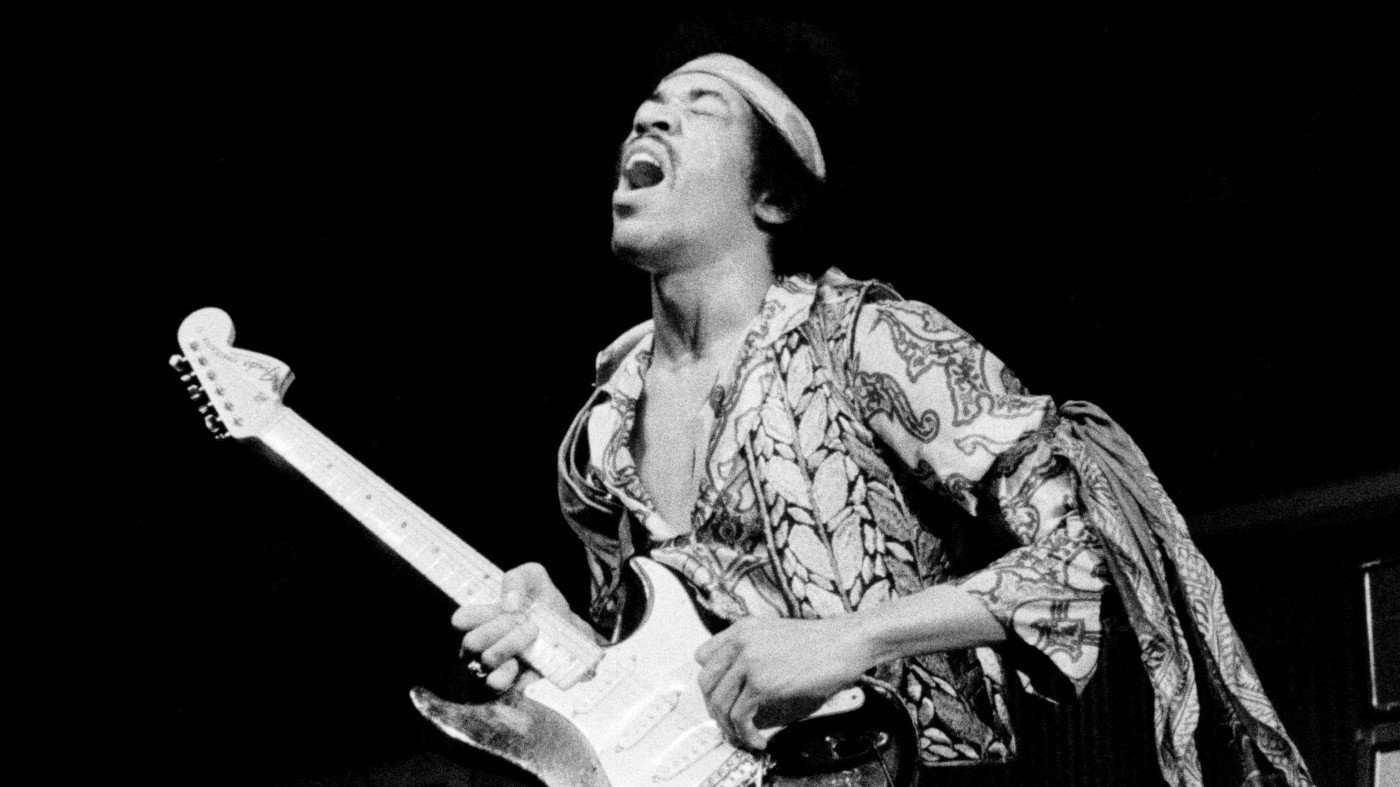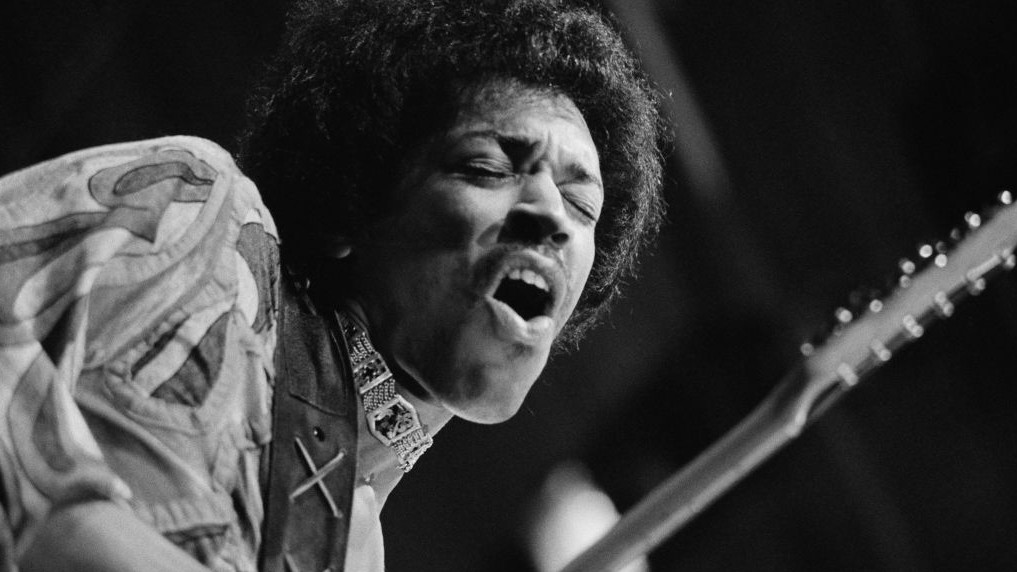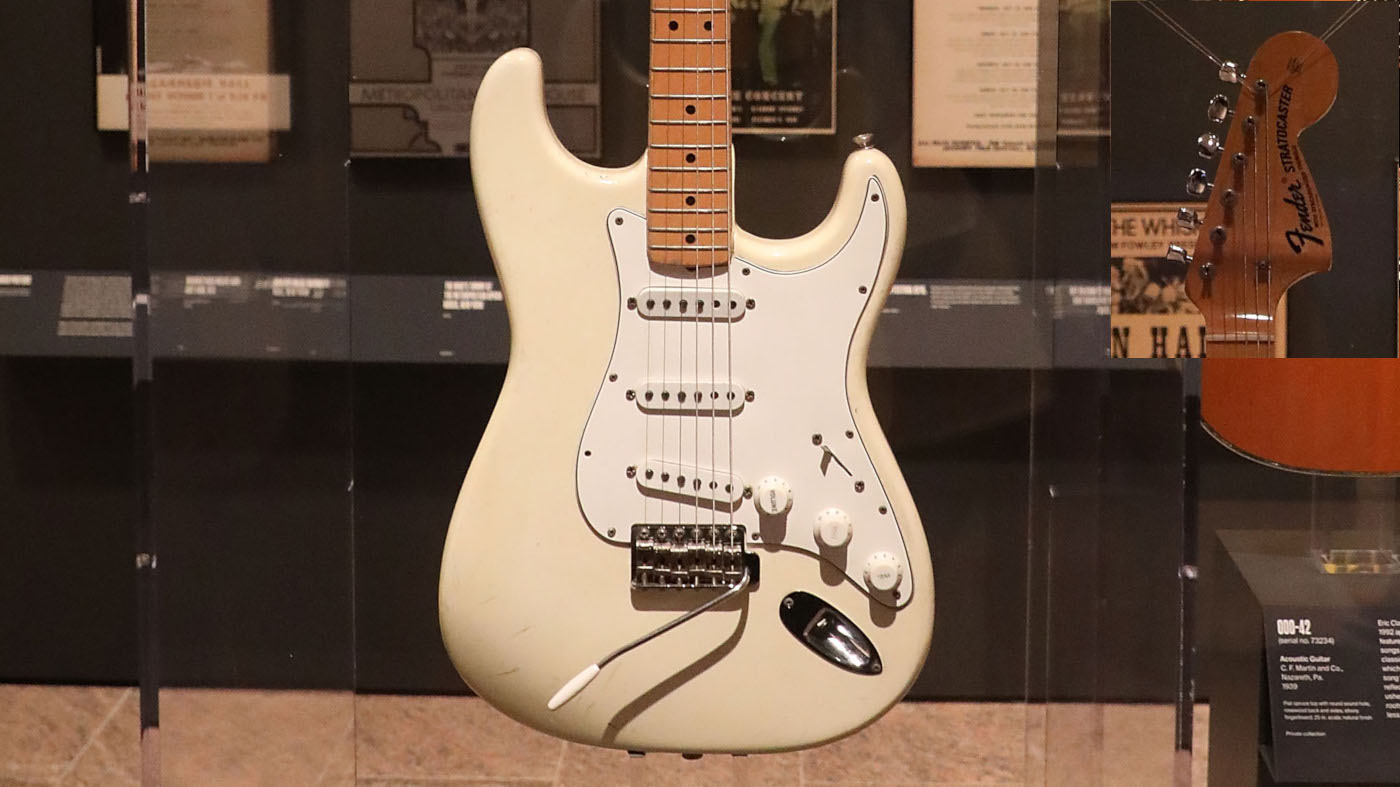FX guru Roger Mayer on Hendrix: “Anybody can buy a wah and just make it go ‘wah-wah-wah’, but making it talk is something else”
Gear mastermind on that Woodstock set and Jimi's rig

50 years on from Jimi Hendrix’s legendary headline performance at Woodstock, we caught up with his “secret weapon” Roger Mayer to talk Stratocasters, '60s effects and ‘The Star-Spangled Banner’...
Roger Mayer was instrumental in helping Jimi Hendrix achieve his extraordinary live tones and lay down some of the finest guitar sounds ever heard on record.
He’d been out on the road in 1968 with Jimi following the recording of Axis: Bold As Love the previous year, and in 1969 the pair relocated from London to the States. Roger, newly married, moved to New York City, while Jimi later decamped Upstate to the hamlet of Shokan (just outside of Woodstock) to set about writing and rehearsing with a new band line-up prior to their Woodstock festival debut.
How did you modify Jimi’s Strats?
I used to resurface the neck join... Where the neck meets the body is the main acoustic junction; it can increase the sustain of the guitar dramatically
“It was a case of making sure the bridge and nut were adjusted for left-handed playing and sometimes I disconnected the tone pots, because it makes the guitar sound a bit more transparent and brighter. But we didn’t do much with Strats electronically.
"When I first met Jimi, I conducted a bunch of experiments on the pickups and, in the end, we discovered that what Leo [Fender] came up with in terms of number of winds was about right. It was a good compromise between output and treble response.
“I used to resurface the neck join. We’d take the neck off and make sure the join area was a perfectly flat surface, and we’d make sure that the corresponding surface on the body was also dead flat, with no paint. Where the neck meets the body is the main acoustic junction; it can increase the sustain of the guitar dramatically.”
Get the MusicRadar Newsletter
Want all the hottest music and gear news, reviews, deals, features and more, direct to your inbox? Sign up here.
How was the tremolo system set up?
“It was a standard Fender Stratocaster bridge and floating tremolo. It required an awful lot of careful setting up, including the tension of the bridge screws - they had to be adjusted perfectly so the tremolo comes back in tune. Jimi used five springs in the back of the trem; you’ve got more chance of it coming back into tune with five springs. It also affects the natural resonance of the guitar, so you get a different acoustic coupling into the body of the guitar.”
Did he go through lot of Strats on tour?
“At any one time he would have four or five guitars at a gig. We had to carry them, so we didn’t have that many. Some of them had quite a short life: they’d get stolen or they’d get damaged.
"Jimi used to basically fuck the amp with his guitar and knock the pole pieces back into the pickup, so we’d have to rob the pickups out of a few guitars just to get one or two working.”

Strats life
Were some Strats more precious to him?
“Many of the guitars got stolen and they didn’t last that long, but he used whatever was his favourite at the time. To Jimi, guitars were just tools of the trade. We bought new ones and we fixed them up the best we could. Back in the day, though, there just weren’t as many guitars around.”
Did he ever express a preference for pre-CBS or late-60s Strats?
At Woodstock he used a Vox wah, silicon Fuzz Face and Uni-Vibe, in that order. He didn’t use an Octavia
“No. We couldn’t keep them long enough! I don’t remember there being that many secondhand ones around in the late 60s. He wanted new ones, but they were relatively expensive and you didn’t have that much choice. I used to buy quite a few guitars from Manny’s [Music in New York City], but you might have to go through 10 or 15 until you found one that you liked the feel of.
"They were all hand-sanded and felt different. The custom-colour Strats were normally made from more pieces of wood than the sunburst or [transparent] finishes; Jimi mostly had black or white, which were sometimes made from five pieces of wood. The opaque colours covered all the joins.”
Did Jimi prefer maple or rosewood?
“Well, he could tell the difference, but it just depended on what he wanted to do. Every guitar is a different piece of wood. The acoustic properties of maple are brighter than many other woods, and a Strat with a solid maple neck has a particular sound. ”
Which effects did Jimi use at Woodstock?
“A Vox wah pedal, silicon Fuzz Face and Uni-Vibe, in that order. He didn’t use an Octavia. [The vocal quality of his wah sound] was mainly because of what he’s playing and how he’s using the pedal. Anybody can buy a wah and just make it go ‘wah-wah-wah’, but making it talk is something else.
"Jimi used the Vox wahs and the Italian Jen ones, but he used the Vox wahs in America because the Italian ones weren’t sold there. I’d modify them occasionally by changing the sweep capacitor [value], or I’d insert a buffer to enhance the harmonics coming through.”
What matters most
Which kind of Fuzz Face did he use?
“It would have had silicon transistors. The age of using germanium transistors in production started to fizzle out in ’67, and in ’68 silicon [transistors] became available [in Fuzz Faces]. They were quieter than germanium transistors and, more importantly, much cheaper. But they were still temperamental and would sometimes pick up radio signals. We used to select quite a few Fuzz Faces in batches at a time.”
How was Jimi’s Fuzz Face set?
His Fuzz Faces were maxed out. The amps were normally flat out, too, and he would use the guitar volume to make adjustments
“Maxed out. The amps were normally flat out, too, and he would use the guitar volume to make adjustments. He had so much gain and distortion at his fingertips. I think the sheer volume of the amps had a big effect on the way the pedals sounded - it made a big difference to the dynamics and the sound you can get from a relatively simple setup.”
A modest setup by today’s standards...
“Jimi was too busy engaging with the audience to stare down at his feet. If you’re spending a lot of time choosing which distortion to use, you’re probably not spending that time on what you’re actually playing. I think having too much choice can be a heavy cross to bear.
"It’s the vision of what you’re going to play and your artistic expression that matters the most. Jimi was all about freeform expression. You never knew what he was going to do. That’s what was fun about watching him.”
His rendition of The Star-Spangled Banner is the perfect example...
“He’s been up all fucking night, it’s early in the morning, he’s one of the last people on at Woodstock, most people have gone home. It’s like, ‘I’m playing this for all the people who are still out there, who are stoned and who are anti-war.’ It was Jimi’s take on the Vietnam war. It was a war protest. It’s like, ‘Here’s The Star-Spangled Banner. Now, what the fuck are we doing in Vietnam?’
“There was a whole lot of shit going on when I was over there - there was a lot of social unrest in America at that time, but the music was really saying something. It all went together to make some of the greatest music that’s ever been performed. Jimi didn’t even have to use words because the music transcended words and went all around the world. And it still does.”

The story of the White Strat
Former Guitarist editor Neville Marten looks back on his rendezvous with Hendrix’s white Strat:
“Back in 1989, I was editor of Guitarist, having previously worked for Fender as its UK guitar repairer. Fender’s John Hill asked me to help with a new artist liaison centre in London, setting up the guitars that visiting guitarists might borrow. On arrival, John said that Mitch Mitchell was coming in with a guitar he’d like me to look at. It was Jimi’s Woodstock Strat and Mitch had had it since Jimi’s death in 1970.
“I removed it from its case and examined it. It was clearly a righty strung lefty, and had all the hallmarks of a Jimi guitar: ciggy burns, shirt stain bleeding pink into the white finish, and so on. I cleaned it, adjusted it, polished the frets, reset the action and restrung it.
"It was an amazing moment with the most legendary guitar. Yet controversy surrounds it. Due to a typo in the article I wrote for Guitarist, the serial number was printed incorrectly. This was years before the internet when anything ever written would resurface. However, that really was and is ‘the’ guitar.”
Rod Brakes is a music journalist with an expertise in guitars. Having spent many years at the coalface as a guitar dealer and tech, Rod's more recent work as a writer covering artists, industry pros and gear includes contributions for leading publications and websites such as Guitarist, Total Guitar, Guitar World, Guitar Player and MusicRadar in addition to specialist music books, blogs and social media. He is also a lifelong musician.












